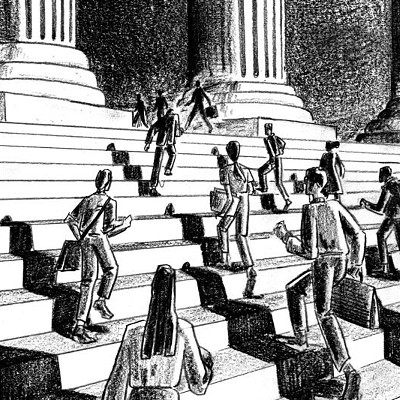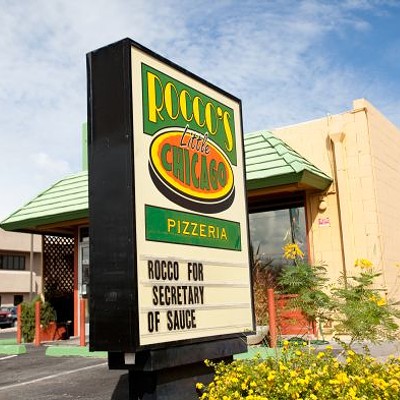Lester Slezak, a United States Air Force veteran and former American embassy labor counselor to Japan from 1980-1984, has complained to Tucson's Nippon Motor Service over their logo, which incorporates the Japanese imperial flag. Commonly known as the rising sun, the logo displays a red ball emanating red rays on a white background.
Slezak first asked Nippon Motor Service in November 2005 to "cease and desist" their use of the flag in the logo; he claims the flag represents atrocities committed in Japan during World War II, and that its presence in Nippon's logo only serves as a reminder of those.
There is "no way of mistaking its origins," he says of the flag. "It's a dirty, dirty history, and a dirty, dirty flag."
He has sent several letters and newspaper articles to the business, including Bonnie Henry's Arizona Daily Star article, "The Bataan Death March," which tells of a local WWII veteran who survived the march. As part of his request, Slezak says, he even made several suggestions for another Japan-related logo, including images of sumo wrestlers, geishas, Mount Fuji or the chrysanthemum.
Slezak contends that flag symbolizes a specific, violent message. "As far as I'm concerned, (the flag) is every bit as reprehensible as the swastika," says Slezak. "I just wish to see this hateful and heinous symbol removed from Tucson."
Cathy Troyer, owner of Nippon Motors, says that she and her husband and co-owner, Tub, didn't intend for their logo to upset or offend. She says that "a previous owner who we bought the business from had the logo," and that they didn't realize at the time that the image was of the Japanese imperial flag.
Nippon Motor Service, which has been in business for 25 years, was purchased by the Troyers in 1998; Tub Troyer has been with the business since its inception. After the couple became owners, they decided to cut the image of the flag in half, because, Cathy Troyer says, some people--like Mr. Slezak--had raised concerns about the image.
Nonetheless, "it doesn't seem to matter to him that we had done that," says Troyer. Slezak, she says, is currently the only person raising the issue. His main concern, according to Troyer, is the lone, free-standing sign outside of the building that still displays the entire flag. She said that she's entertaining the possibility of altering the freestanding sign to include the other logo with the half flag.
"We are very sympathetic for Mr. Slezak," she says. "We have looked into getting estimates" for changing the sign. She says that estimates and a potential sign change could occur sometime before Christmas.
But because the logo has been a part of the company for so many years, Troyer says the business cannot afford to completely change it: "We have to stay with what is recognizable to the public."
UA Regents Professor of History Michael Schaller, who focuses on 20th-century U.S. history and foreign policy with Asia, thinks that Slezak's crusade is a bit misplaced.
"Yeah, imperial Japan was a nasty place," he says, "but (the flag) had no direct relationship with World War II aggression, or mistreatment of American or other prisoners, or anything like that. It was used by the Japanese imperial government during the war, but it wasn't created the way the Nazi symbols and swastikas were created in the '30s as a symbol of the Nazi party, as the representative of the German nation. In Japan, it was a little more diffuse than that."
Schaller says that the Japanese imperial flag predated WWII conflicts--although it did carry a particular stigma throughout the war. However, in the periods before and after the war, the flag has rarely elicited such strong reactions.
"I have not run into that many people who have had that feeling," he says, "because I think they felt that at the end of the war, the Japanese accepted defeat. They did undergo a peaceful occupation; they were very receptive to American values and cooperation, and really did develop a new society. I think that was more important than nursing old wounds."












